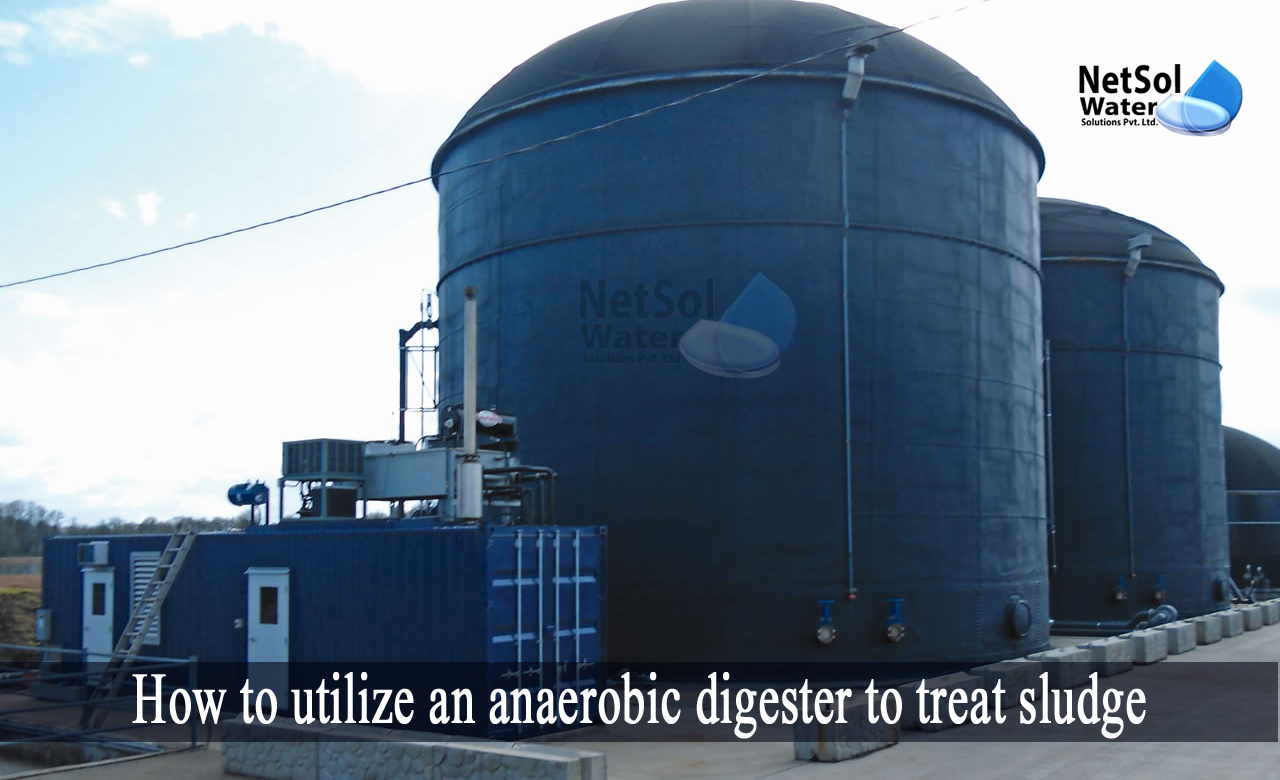Sewage sludge treatment
The procedures utilized to handle and get rid of the sewage sludge generated during sewage treatment, are referred to as sewage sludge treatment. The goal of sludge treatment is to lessen the weight and volume of sludge, in order to lower transportation and disposal expenses, as well as any potential health issues associated with disposal methods.
In this article, we will learn about the working or utilization of an anaerobic digester to treat sludge.
Process overview of sludge
Sludge is the primary waste product of water purification, including wastewater for environmental discharge, as well as water for consumption.
Sludge always comprises of water, dissolved organic and inorganic substances, and suspended particles, regardless of where it came from. Normally, 2–5% of the sludge for municipal wastewater is made up of suspended solids.
Sludge processing is necessary to lessen:
The risk to public health it causes is mostly due to the pathogenic microorganism content, its volume, which affects the price of subsequent hauling and disposal, its putrescence (i.e., the decay of organic matter), and its instability, such as the leakage of poisonous or other harmful components.
Sludge generation
The quality of the initial feedwater and the type of unit operation from which the sludge is released, both affect the sludge's properties.
The two main sludge streams for traditional municipal wastewater treatment are:
1: If the biological treatment is based on the activated sludge process, sludge is produced from the primary sedimentation stage, producing primary sludge, and the secondary biological treatment stage, producing waste activated sludge (WAS).
2: The part of the sludge that contains organic solids, measured as volatile solids (VS) content, is typically thought to be the most directly beneficial. These solids, known as bio-solids, can either be used as fertilizers for the soil, or their latent energy can be recovered by being converted to heat or a useful fuel (or biofuel).
How to utilize an anaerobic digester to treat sludge?
Different mixing and temperature settings can be used to run anaerobic digesters. The types of microorganisms that can survive in the temperature range used, known as mesophilic and thermophilic microorganisms often specify the temperature conditions.
Volatile solid concentration:The organic, biodegradable portion of the solids is considered to make up the volatile solids (VS) concentration.
Volatile suspended solid concentration:The volatile part of the suspended solids is considered to make up the VSS concentration.
Organic loading rate:The amount of digestible organic materials per m3 sludge, put into the reactor each day, is indicated by the organic loading rate (OLR).
pH:The pH is another important operating parameter. The biological mechanism dictates that the pH must be maintained within a specified ideal range, to guarantee that the procedure is successful.
Gas yield:The amount of generated methane gas, also known as the methane/gas yield, is a crucial operational performance measure for anaerobic digestion. Both the mass of methane, per unit mass of volatile solids and a percentage are used to indicate this.
Net energy generation:The net energy generation or consumption in kWh is the other important factor. This has to do with the sludge feed's latent energy, which is represented by the calorific value in kWh per tonne of dry sludge solids (DS).
The anaerobic digestion process is, in general, energy positive because the sludge supplies more energy, than is needed to keep the AD reactor at the requisite temperature.
Design parameters to treat sewage sludge
Below is a summary of the usual parameter value ranges for mesophilic and thermophilic operation, for a typical sewage sludge feed. If the reactor or process treatment scheme are properly constructed or designed, operating outside of these limits (such as low-temperature psychrophilic operation) is conceivable.
|
Parameter |
Mesophilic |
Thermophilic |
|
Temperature °C |
30-39 |
49-57 |
|
Retention time,d |
15-30 |
5-14 |
|
VS reduction in % |
20-55 |
20-55 |
|
OLR |
0.5-1.6 |
1.6-6.5 |
How can we assist?
Netsol Water offers you practical solutions for effective sludge waste and wastewater management.
We also manufacture a wide variety of STPs, ETPs, and WTPs, based on advanced technologies. Sludge is also maintained using anaerobic digesters. Contact our experts today for additional information on how you can manage your wastewater and sludge.
Netsol Water is Greater Noida-based leading water & wastewater treatment plant manufacturer. We are industry's most demanding company based on client review and work quality. We are known as best commercial RO plant manufacturers, industrial RO plant manufacturer, sewage treatment plant manufacturer, Water Softener Plant Manufacturers and effluent treatment plant manufacturers. Apart from this 24x7 customer support is our USP. Call on +91-9650608473, or write us at enquiry@netsolwater.com for any support, inquiry or product-purchase related query.



